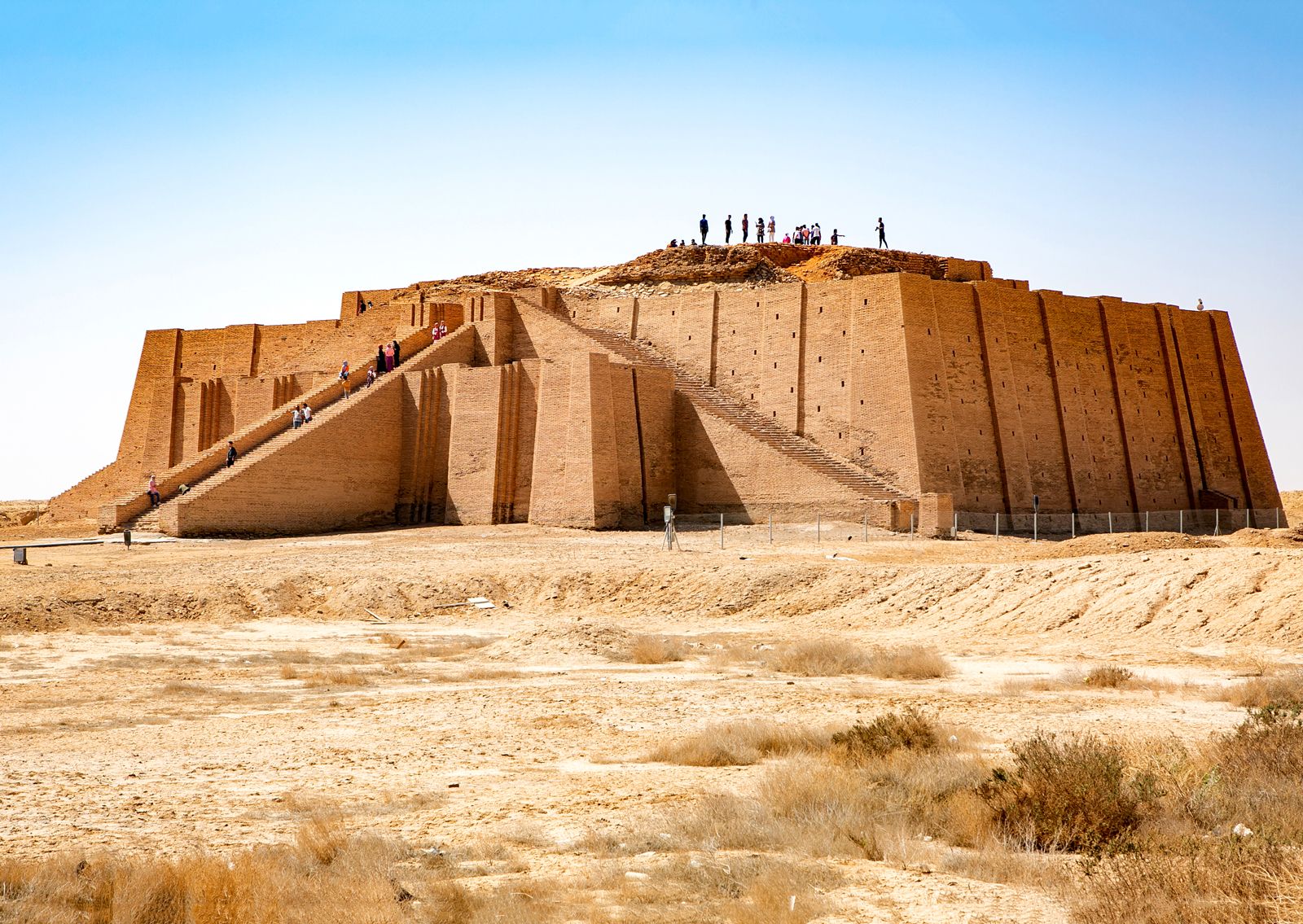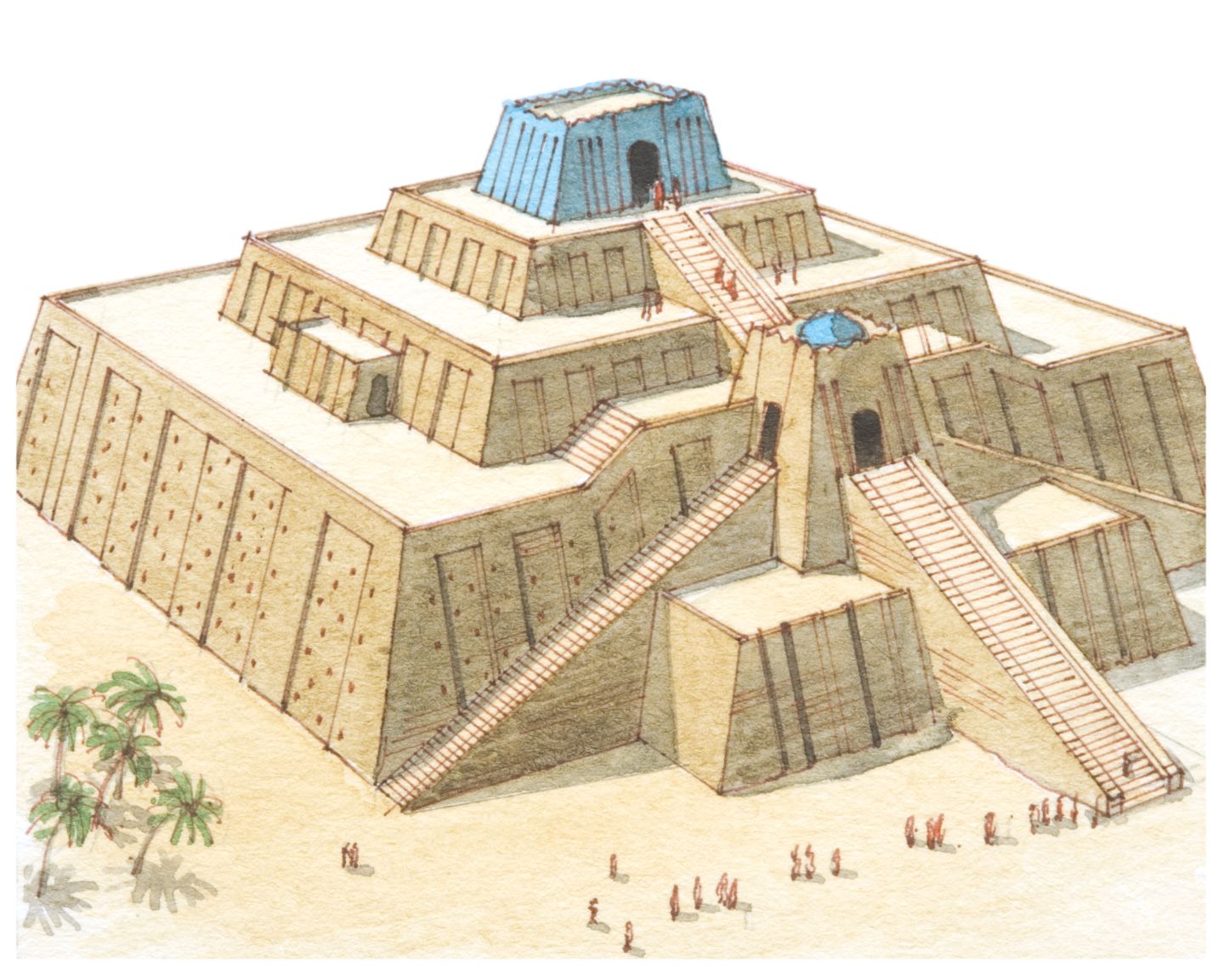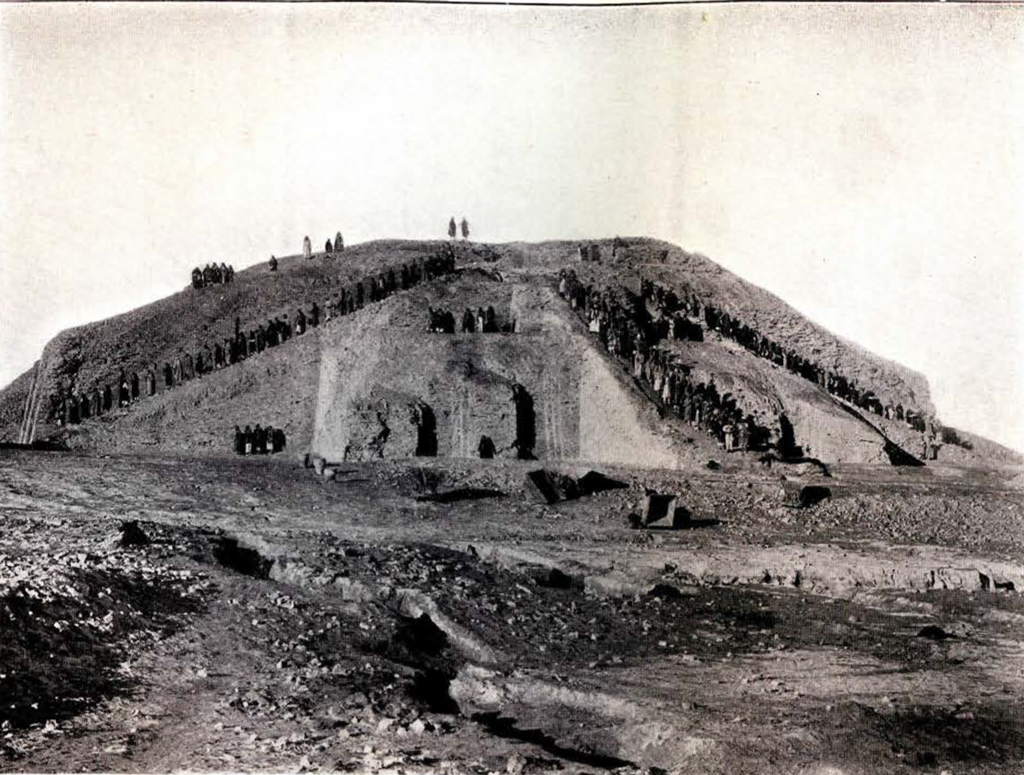Before and after its excavation and restoration, the Ziggurat of Ur stands as a magnificent testament to the architectural prowess of ancient Mesopotamia. Constructed around 4,000 years ago by King Ur-Nammu of the Neo-Sumerian Empire, this iconic ziggurat is recognized as one of the oldest temples in Iraq, dedicated to the moon god Nanna. Once dominating the skyline of the ancient city of Ur, it served as a focal point of worship and cultural life.
Rediscovery and Restoration
Over the centuries, the ziggurat fell into disrepair, gradually becoming buried beneath layers of sand and debris, leading to a near-total loss of its historical significance. Its existence remained largely forgotten until its rediscovery in the early 20th century. A meticulous excavation and restoration process ensued, revealing the impressive scale and intricate details of this ancient monument, much to the astonishment of archaeologists and historians alike. The restoration efforts, which began in the 1920s and continued into the 21st century, have aimed to stabilize the structure while preserving its original features.

Excavation Techniques
The excavation process employed advanced archaeological techniques, including careful documentation and conservation methods. Archaeologists worked diligently to ensure that the ziggurat’s structure was not only revealed but also preserved for future study. This meticulous approach has allowed for a greater understanding of the construction methods used by the Sumerians and their architectural innovations.
Architectural Features
The Ziggurat of Ur is constructed from sun-dried bricks and features a three-tiered design, rising to a height of approximately 21 meters (69 feet). Each tier represents a different level of the structure, leading up to a temple platform at the top, which was believed to house the statue of Nanna. The ziggurat’s massive size and imposing presence reflect the advanced engineering skills of the Sumerians, who utilized a combination of labor, organization, and architectural knowledge to create this monumental structure.

Structural Design
The three-tiered design of the ziggurat illustrates the Sumerians’ understanding of geometry and structural integrity. Each tier is slightly smaller than the one below, creating a stepped effect that not only enhances stability but also provides an impressive visual impact. This architectural feature is significant as it indicates the cultural emphasis on hierarchy, both in society and in religious practice.
Cultural Significance
The Ziggurat of Ur offers invaluable insight into the religious and cultural practices of ancient Mesopotamia. As a monumental structure, it not only highlights the architectural ingenuity of the Sumerians but also reflects their deep reverence for their deities. The ziggurat served as a bridge between the earthly realm and the divine, showcasing the spiritual aspirations of a civilization that flourished in one of the world’s earliest urban centers.

Religious Practices
Moreover, the ziggurat was part of a larger complex that included a temple and administrative buildings, illustrating the integration of religious and civic life in Sumerian society. It played a crucial role in rituals and ceremonies, further emphasizing its importance as a center of worship and governance. The ziggurat’s function as a religious site highlights the Sumerians’ belief in the interconnectedness of the divine and the material world.
Conclusion
Today, the Ziggurat of Ur remains a symbol of the ingenuity and skill of the Sumerian people, who constructed this remarkable structure over 4,000 years ago. It stands not only as an architectural marvel but also as a profound reminder of humanity’s enduring quest for meaning and connection with the divine. As ongoing preservation efforts continue, the Ziggurat of Ur will undoubtedly remain a significant landmark for future generations, offering a window into the rich history and culture of ancient Mesopotamia. Through its grandeur, the ziggurat invites us to reflect on the complexities of human civilization and the legacies we leave behind.

